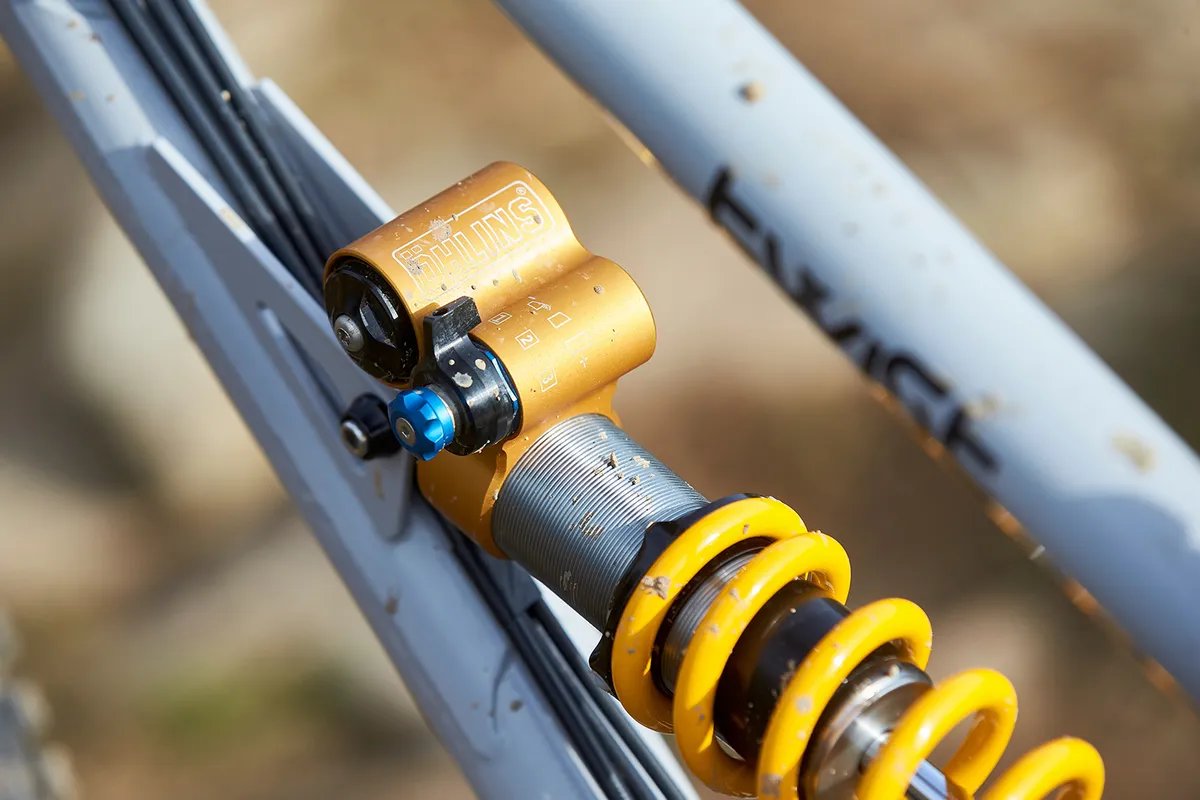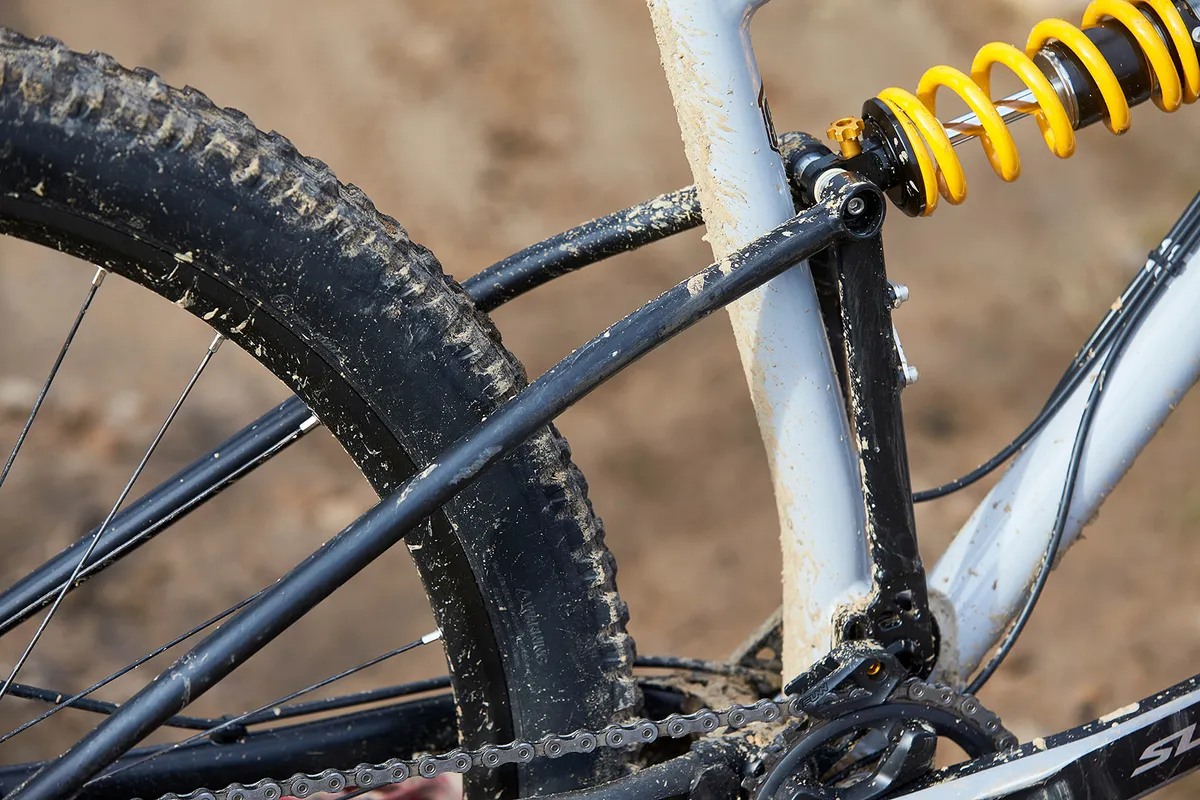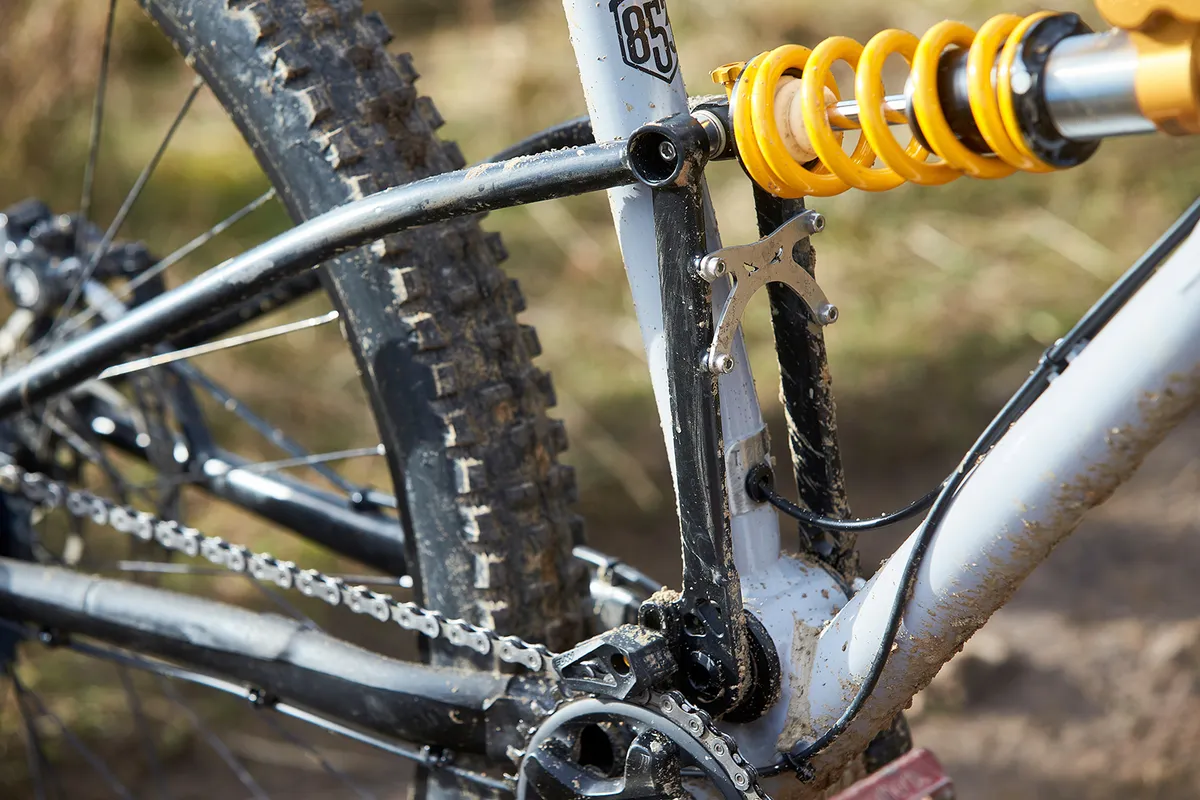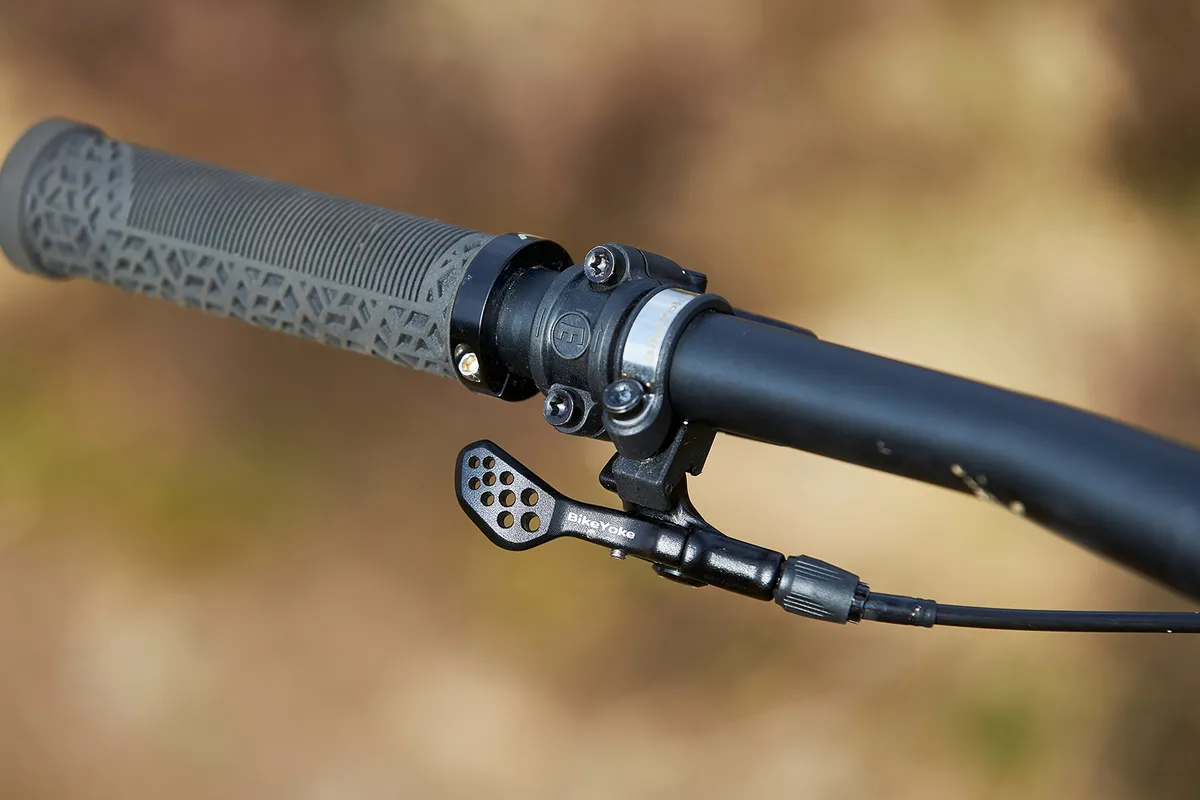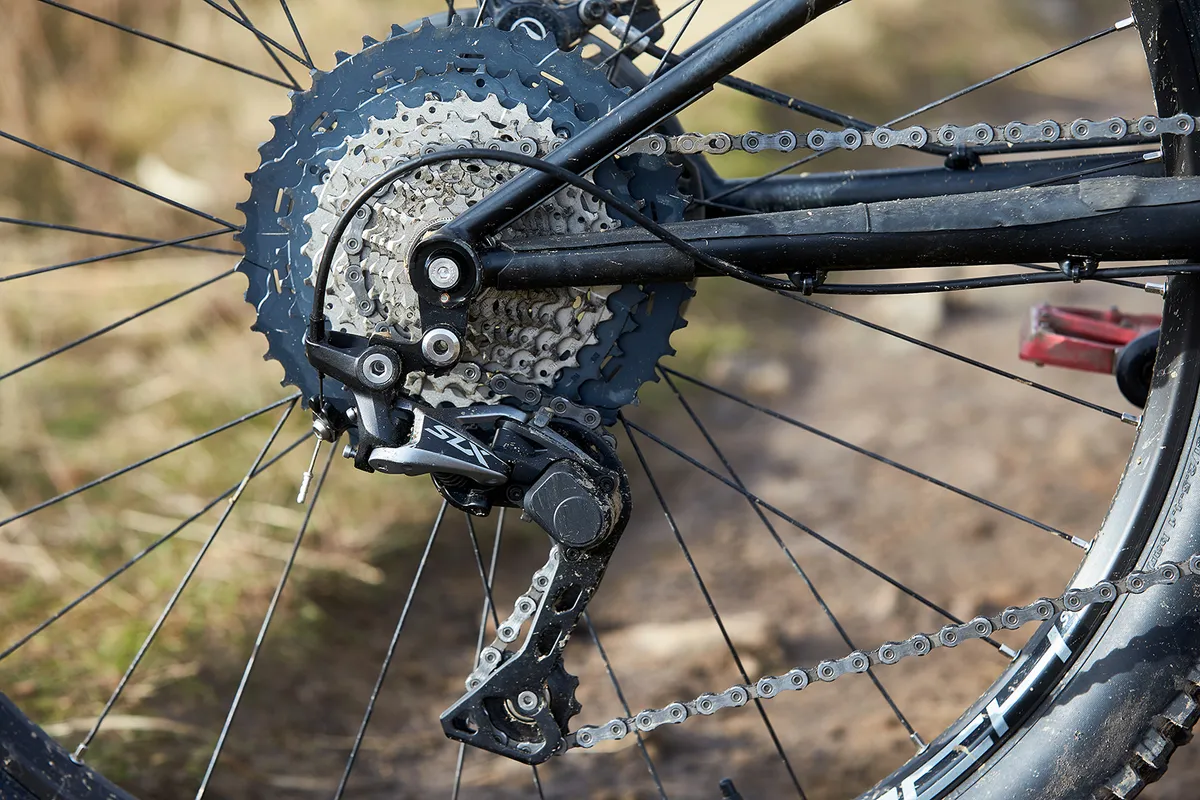Starling Cycles was started by aerospace engineer Joe McEwan, built by hand in his shed at the back of his house. As the brand's popularity developed, McEwan jacked in his day job, got himself a workshop and took on Starling as a full-time occupation.
All Starlings are made from steel, including this Twist which uses mixed wheel sizes (29in up front and a 650b wheel at the back), but can a boutique mullet bike compete with the really big players in a ferocious enduro bike market?
Bike of the Year 2020
The Starling Twist is part of our annual Bike of the Year test.
Head to our Bike of the Year hub for the full list of winners, categories and shortlisted bikes, as well as the latest reviews – or read our behind-the-scenes feature on how we tested Bike of the Year 2020.
Starling Twist frame and suspension details
The Twist is designed in Bristol, UK, and made from custom butted Reynolds 853 steel. While the front triangle is fabricated right where it’s designed, the rear end is made by ORA Engineering in Taiwan.
Being a small bike brand has enabled Starling to be very reactive (you only need to check out its Instagram account to get an idea of the cool and crazy frames McEwan is working on), so it’s no surprise to see it creating one of the few dedicated mixed wheel size bikes on the market.
Up front sits a 29in wheel and nestled in the rear triangle is a 650b wheel (which can take up to a 2.8in tyre).

There’s no elaborate, complex hard to understand suspension magic going on here. The Twist uses a simple single pivot design to deliver its 160mm of rear wheel travel via, in this case, an Ohlins TTX 22mm coil shock.
Starling says that going down the single pivot route with a linear leverage ratio (a consistent, even leverage that should, in theory, feel very predictable) makes for a bike “that riders can quickly jump onto and understand and get stuck into riding” – something that certainly rang true with my experience aboard it. It also believes that “a simple bike is a fast bike”.
Another benefit of being a relatively small operation is that Starling is able to offer shorter, custom travel options on the Twist – if you’re looking for something with a little less squish.
The skinny steel tubes help to keep things looking clean and minimal, which is very pleasing to the eye. There’s no shortage of neat details though.
Take a close look at the gusset plates that sit at the head tube junction and you’ll spot two starling birds cut out. It’s the same on the cross brace that spans the two upright struts of the rear triangle (located just below the rearward shock mount).
Then there’s the tidy little integrated seat clamp, which further helps clean things up.

Cable routing (excluding the dropper post cable) is an external affair (though they do thread through the holes in the head tube gusset) and Starling uses a threaded bottom bracket.
These small measures help reduce headaches when carrying out routine maintenance, which ultimately equals more time on the trails.
When you buy from Starling, it’ll also offer custom colour options, but bear in mind this will add to the price. If you’re not interested in a full build, the Twist is available as a frame only for £1,770 without a rear shock.
Starling Twist geometry
Starling offers the Twist in three sizes (medium to extra-large) with reach measurements ranging from 450mm through to a lengthy 515mm. At 172cm / 5ft 8in, I opted for the medium frame and it fitted me really well.
As I’ve already touched on briefly, the Twist is built around mixed wheel sizes (29in front, 650b rear) and has a wheelbase of 1,220mm, which should offer plenty of high-speed stability. The chainstays measure 435mm and aim to create a balanced ride yet keep things manoeuvrable when the riding get tight and twisty.
When it comes to the most scrutinised angles, the Starling is certainly one of the more contemporary contenders out there.
Up front, the head angle measures in at a slack 64.5 degrees, while the 77-degree seat angle is designed to perch you right up above the bottom bracket for a more efficient climbing position.
At just over 340mm, the bottom bracket is low enough to make for a confident, stable feel through the turns, but not so low that you’ll be clouting pedals constantly when pedalling through rough terrain.
Starling certainly embraces the new, longer dropper posts. As a result, the seat tube on the Twist is just 410mm (medium) and, in this build, is paired with the 160mm drop BikeYoke Revive post.
That means when the saddle is dropped, there’s loads of clearance and no fear of the seat getting in the way when tackling really steep sections of trail.
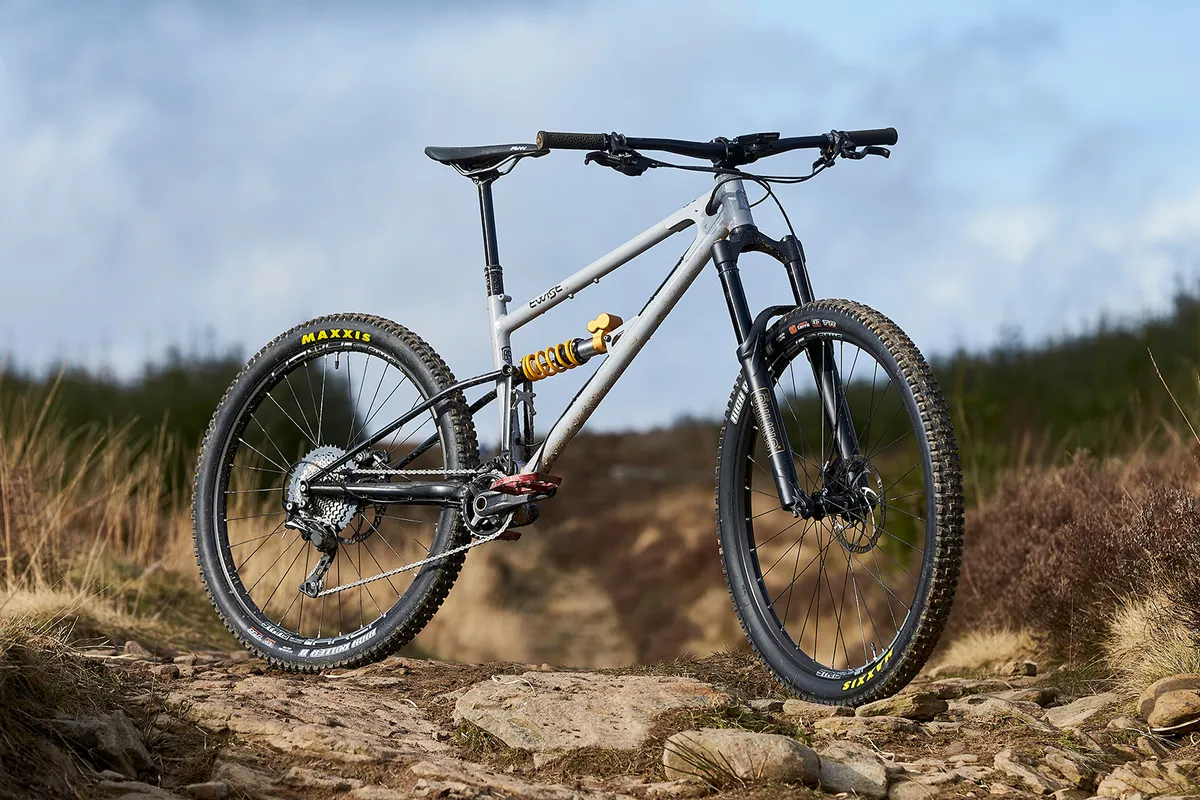
- Sizes (size tested *): M*, L, XL
- Seat angle: 77 degrees
- Head angle: 64.5 degrees
- Chainstay: 43.5cm / 17.13in
- Seat tube length: 41cm / 16.14in
- Top tube (effective): 59.6cm / 23.46in
- Head tube length: 11cm / 4.33in
- Bottom bracket height: 34.2cm / 13.46in
- Wheelbase: 1,220mm / 48.03in
- Stack: 56.4cm / 22.2in
- Reach: 45cm / 17.72
Starling Twist specifications
My test bike used a standard build with kit from various brands that Starling partners with, including Ohlins, Funn, Shimano and Magura.
I’ve already mentioned the Ohlins rear shock, but this is paired with a 160mm travel RFX36 EVO fork up front.
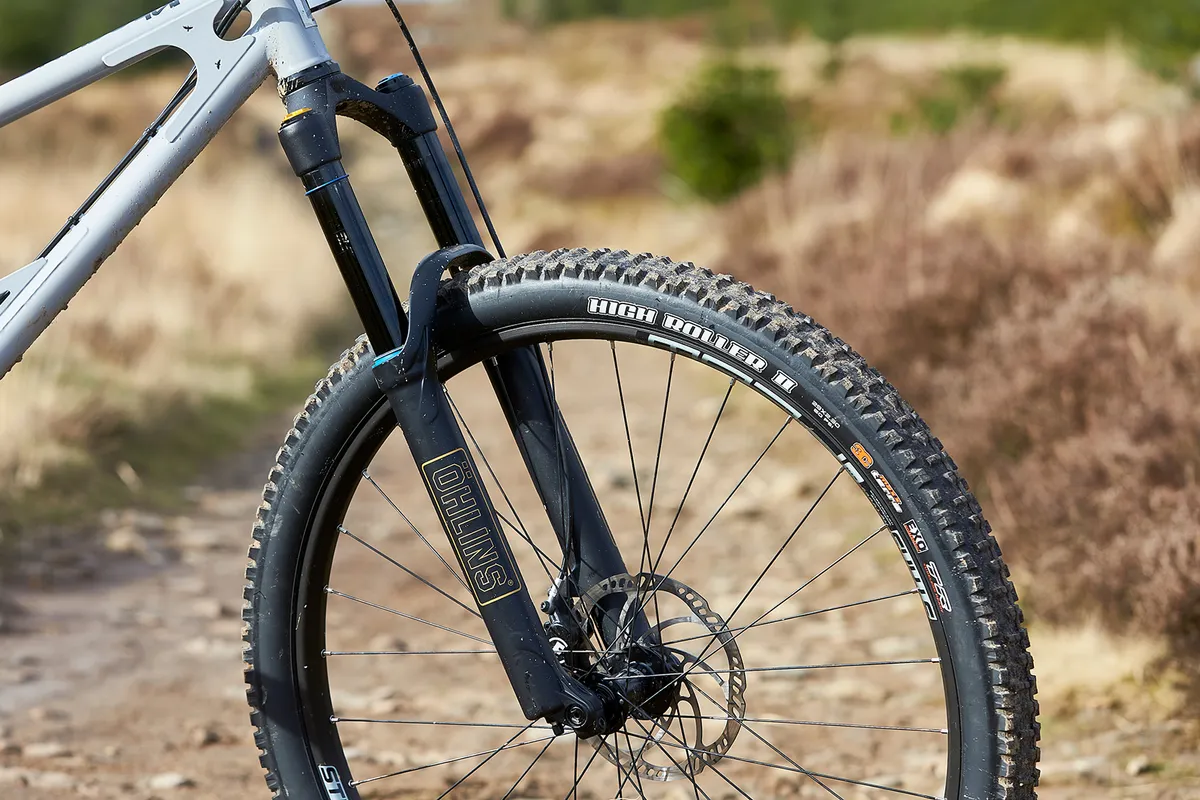
Shimano provides the drivetrain in the form of its SLX system. It’s not the 12-speed variety, though, but a 1x11 set up instead with an 11-46t cassette. While it’s not the widest range cassette out there, it’ll still cover most climbing scenarios without issue.
The Magura Trail brakes use a four-piston caliper at the front and a two-piston caliper at the rear. I’ve had mixed experiences with Magura brakes over the years, but generally they tend to offer a serious amount of power, but it’s not always the easiest to control.
Funn supplies the well-shaped bar, stem and saddle, and it’s great to see Maxxis rubber wrapped around Stans rims (Flow rim up front, Arch at the rear).
The tyres aren’t the widest at 2.3in and do look a touch skinny compared to other bikes in this category.
Starling Twist ride impressions
In a bid to get to grips with the Twist’s handling, I rode it on a real mix of trails. These included slower, more technical natural trails covered in awkwardly spaced roots along with jagged, awkward roots.
This was followed by a number of trips to faster bikepark style tracks that featured numerous high-load turns, jumps and savage rock gardens.
As I try to do with most bikes, I also got a second opinion on the Twist, courtesy of Luke Marshall, Mountain Biking UK’s staff writer, and ex-downhill world cup racer to properly cement my findings.
Starling Twist climbing performance
The Twist feels incredibly efficient when seated and pedalling, and really lets you fly up the climbs. The steep 77-degree seat angle definitely plays a part in this, as does the rear suspension which remains properly calm and almost entirely bob-free while you sit spinning up the hill in easier gears.
The back end will still move enough to soak up roots and chunky rock steps, which means there’s no issues with traction through the rear on steeper, more technical pitches.
In fact, it feels more akin to a short travel trail bike rather than a 160mm enduro bike when you’re working against gravity.
As a result, I never really felt short changed by the use of the 11-speed Shimano SLX drivetrain, which features a 46t rather than bigger, easier going 50 or 51t largest sprocket.
Although the isn’t particularly stretched out at 596mm, I always felt comfy when winching back up the hills and never had any issues with the front wheel lifting.
Starling Twist descending performance
When it comes to descending, the Twist feels most at home on natural, technical terrain rather than high-speed bikepark style tracks.
The forgiving nature of the steel frame and the supple 160mm of rear wheel travel helps to deliver a smooth, composed ride as you barrel down the hill, slicing across cambers and carving through loose turns.
Things feel quiet and calm, but the Twist definitely responds best to smooth, calculated inputs and line choice.
The geometry certainly encourages a confident, very natural position on the bike and, just as Starling promises, combined with the simple single-pivot design, creates a bike that’s instantly easy to jump on and ride fast.
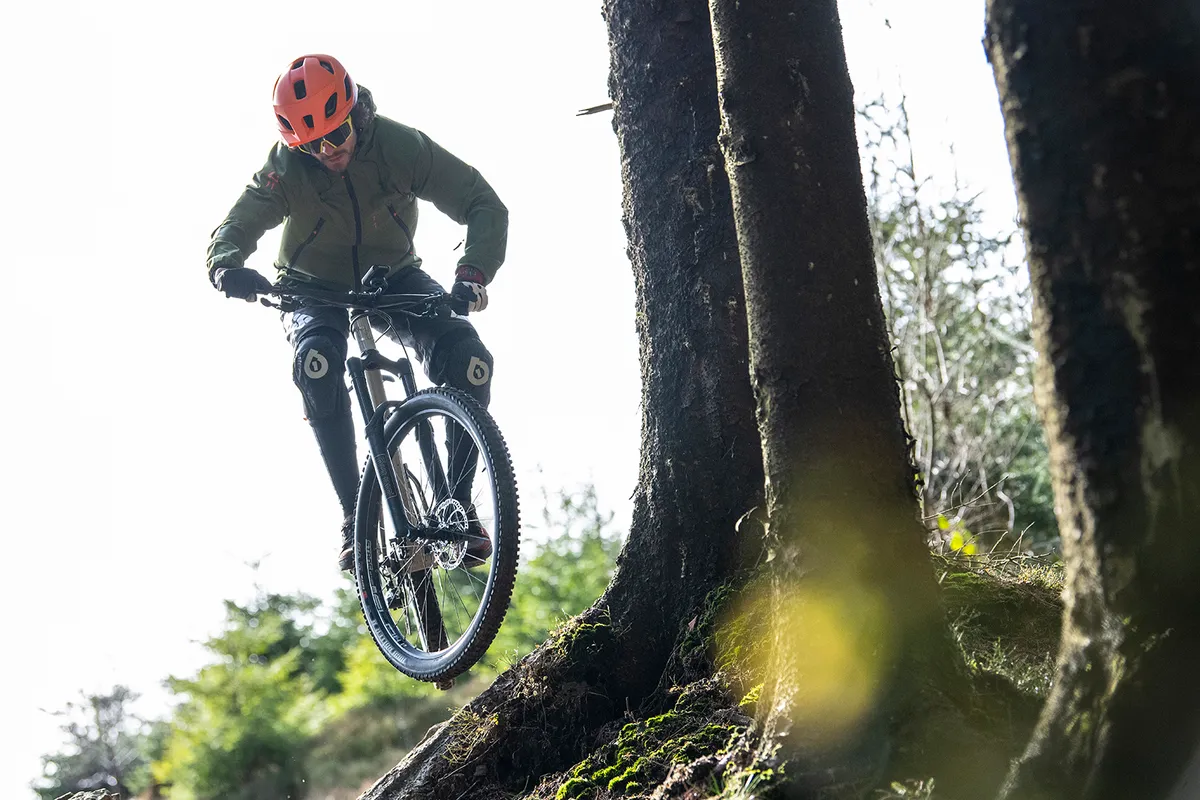
Ride a trail with higher speeds and more repetitive hits and you’ll soon feel somewhat of a mismatched feel from front to rear.
That’s mainly down to the Ohlins fork which I struggled to get setup and feel comfortable on. When barrelling through repeated square-edge bumps, there’s a harshness through the fork that leads to unwanted hand pain and on longer runs, fatigue in the arms.
I played with fork setup quite a bit in a bid to alleviate this, and even running lower spring pressures and completely backing off the compression damping, but I still couldn’t manage to find the comfort I was after.
A broader front tyre (something around 2.5in) could help with the smaller chatter and buzz but wouldn’t likely fix the feeling when tackling bigger hits.
Starling does offer an upgrade to a RockShox Lyrik Ultimate fork – a fork that we really rate highly - but it’ll add an extra £255 to the overall price.
At the rear, the Ohlins coil shock sinks into its stroke with ease and offers a very sensitive initial touch. There’s enough support when sat a little deeper into the travel too, allowing you to pump and load the bike as you work it through the trail's compressions and pop it out of corners.
Thump it really hard and you’ll find the end of the travel, but there’s no harsh bottom-out.
Through the turns, the Twist feels smooth and well-balanced for the most part. The well-proportioned geometry and bottom-bracket height certainly play their part here, but get off line or slap a high-load turn hard, and the give through the chassis and wheels can make things can feel a little less predictable and accurate than I’d like.
It’s by no means a dealbreaker, but does underline what I said earlier; this bike loves the natural tech and is more at home here than the corner schralping abuse it’ll be exposed to in a bikepark.
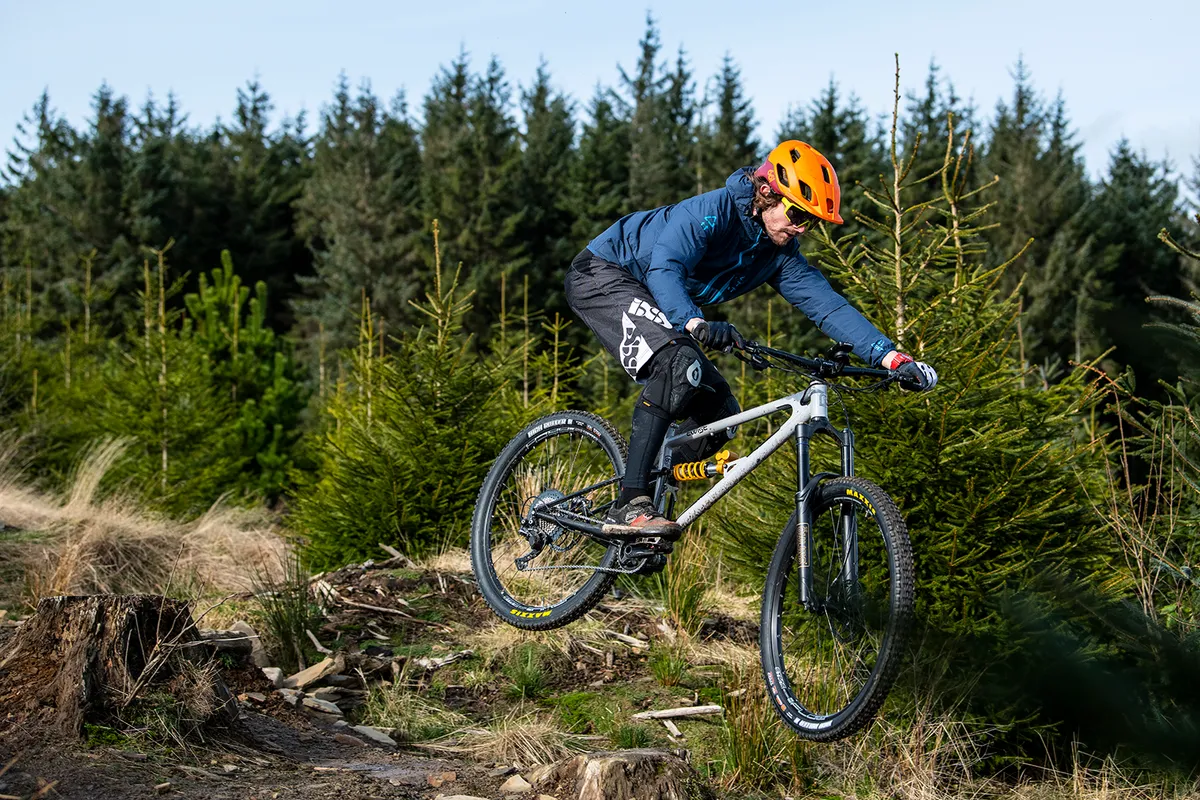
While the tyres on the Twist weren’t quite as wide as I’d have liked, the Maxxis High Roller IIs are still some of the best out there, regardless, balancing predictable grip, rolling speed and braking traction well.
And while the tyres are keen to bite into the dirt when slowing down, the brakes themselves were a little lacklustre. I’d prefer to have a four-piston caliper on the rear of the bike as well as the front and really missed the lack of power as a result.
The Maguras also felt quite spongy at the lever and in the wet, the power drops off rapidly, especially at the rear and certainly seemed to add a nervousness to proceedings on steeper trails.
Overall, the Twist is a nice bike to ride and a lot of fun, especially when tackling natural singletrack. This particular build is held back by the Ohlins fork and Magura brakes, though.
Starling Twist bottom line
Starling’s mixed wheel sized Twist manages to tick a lot of boxes when it comes to all-around performance.
It’s an eager climber that’ll more than happily spin up just about any incline comfortably. On natural, technical terrain its smooth, forgiving feel and supple rear suspension help to keep it glued to tricky lines with confidence.
The Twist does prefer to be finessed rather than smashed into things so won’t suit every rider out there.
I’d swap the Ohlins fork and Magura brakes on this particular model to make the most of what’s on offer elsewhere.
Product
| Brand | Starling_cycles |
| Price | £4504.00 |
| Weight | 14.96kg |
Features
| Fork | Ohlins RFX36 EVO with 160mm travel |
| Stem | Funn Crossfire, 35mm |
| Chain | Shimano |
| Frame | Custom butted Reynolds 853 steel with 160mm travel |
| Tyres | Maxxis High Roller II EXO 3C MaxxTerra 29x2.3in (f) and Maxxis High Roller II EXO 27.5x2.3in (r) |
| Brakes | Magura MT Trail (200mm/180mm rotors) |
| Cranks | Shimano SLX |
| Saddle | Funn |
| Wheels | Stans Flow (fr) and Arch (r) rims on Stans NEO hubs |
| Shifter | Shimano SLX |
| Cassette | Shimano SLX 11-46T |
| Seatpost | Bike Yoke Revive, 160mm |
| Grips/tape | Funn lock-on |
| Handlebar | Funn Kingpin, 785mm |
| Rear shock | Ohlins TTX22M coil |
| Bottom bracket | Shimano Hollowtech II |
| Available sizes | M, L, XL |
| Rear derailleur | Shimano SLX 1x11 |

